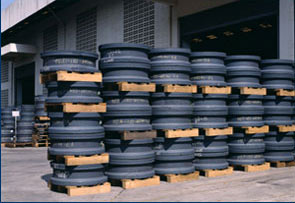Pellet dies: Materials

Pellet dies must resist abrasion, corrosion from chemical exposure and breakage caused by the physical stresses of pellet formation. The optimum die combines high resistance to abrasion, breakage and corrosion with maximum productivity.
Choosing the right die material is important. Pellet dies are made from steel that has been selected for certain carbon and chromium contents and heat-treated for desired properties. The steel's carbon content affects the corrosion resistance and the wear resistance of the die. Dies usually are classified as alloy, stainless or high chrome. Steel with a free chromium content exceeding 12 percent is classified as stainless.
Each of these types of die materials has characteristics that make it more desirable for certain applications:
- Alloy dies are made of medium-grade carbon steel. They are designed for heavily abrasive applications and typically are the most breakage-resistant dies available. Generally, alloy dies are less expensive than stainless steel or high chromium dies and are chosen by feed processors for their good abrasion and breakage resistance.
Since there are a large range of different alloys here are some of the alloy components and the qualities they can bring to the steel:
- Nickel has a strengthening effect;
- Manganese can help to improve the resistance to wear and shock loads;
- Chrome can influence the mechanical properties such as resistance and hardness, along with the physical ones such as resistance to corrosion and oxidization;
- Molybdenum reduces brittleness.
- Stainless steel dies provide corrosion resistance and good wear resistance for moderately abrasive materials. Stainless steel often is chosen for "all-purpose" dies. There are normally the highest quality, longest lasting type of dies but also the most costly.
- High chrome dies provide the most corrosion resistance of the different die materials. Because of the chrome content, they usually start up very easily and allow high pelleting production rates. However, high chromium dies typically provide less resistance as feed moves through the die holes and the effective thickness of the die may need to be increased to achieve desired pellet quality.




